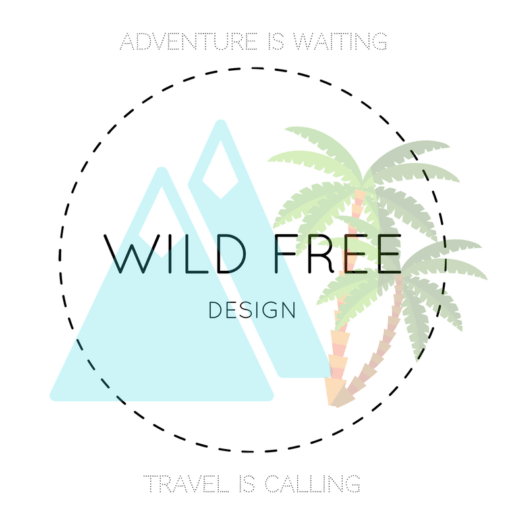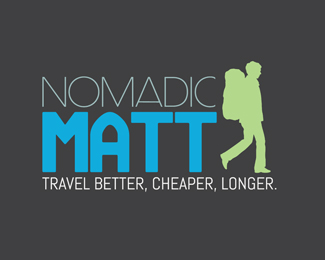Learning The Ins And Outs Of The Blogging Business

Travel blogging now seems like it’s been around for awhile, but it’s still a relatively new vocation in the grand scheme of things. Around 10 years ago there were only a handful of travel writers making their way across the world and documenting their journeys, but that number has exploded since then.
On the surface, the surge in popularity seems understandable. Who wouldn’t want to travel the globe and get paid to do it? Upload a picture of myself to Instagram wearing a certain brand of shoes while on a hiking trail in Thailand and get paid by the shoe company? Sounds good!
While the thought of this is obviously very appealing, things aren’t that simple. Creating a legitimate business through a travel blog is not easy. It requires an investment beforehand, a lot of time commitment, and plenty of failures along the way. It also requires a lot of learning.
Travel Blogging Is A Business
Make no mistake: a travel blog is a business. A travel blog is a brand — and you’re the CEO.
Travel blogs and their corresponding social medias have a good way of making it seem like the blogger is merely some savvy traveler who just keeps stumbling into these amazing locations and having great experiences, throwing together a quick post from the comfort of some rooftop patio overlooking a frame-worthy scene, and moving on to the next stop, all while the money mysteriously rolls in.
This is what some travel bloggers portray in a way, and it is intentional, but what they aren’t showing is all the work that goes into creating those moments, and documenting those experiences.
They aren’t showing the correspondence with brands, advertisers, affiliate marketers, web hosts, travel agencies, hotels, airlines, all of that. They aren’t showing the planning. They aren’t showing all of the annoying moments, the stressful moments, although some mention them in passing.
So, with that said, this post will go over how travel blogging truly is a business and entrepreneurial endeavour, and the things you need to know beforehand in order to be effective at it, in an honest, direct way.
After that, I’ll tell you where you can take actual classes set up by one of the most successful travel bloggers in the world to improve both your blogging and business skills, and get you on the path to being a self-sufficient, professional travel blogger yourself.
Let’s get started!
Save Money
This is the most important first step to getting started with travel blogging. Every single thing you’re going to be doing from the outset will require funds, and that goes beyond just the travel part.
You’ll need to pay for your web hosting, site design work, advertising (on social media) Google Adwords, and more.
The last thing you want to do is be stressed about money during all of this, or not be able to do certain things because you’re running out. The bigger buffer you can build up before starting, the better. Plus, it gives you that extra motivation while still at your current job.
Read
The best way to get on the road to writing quality content is to read as much as you can. The same goes with things related to business. The more you read, the more diverse your thoughts get, and the learning part is important too. You’ll also glean better writing habits in the process.
Matt Kepnes is one of the most successful travel bloggers in the world, and he’s compiled a great list of books to read (and movies to watch) over at his site nomadicmatt.com. I highly recommend you check out his list!
Determine Your Angle And Niche
Due to the proliferation of travel bloggers now in the world, it’s more important than ever to set yourself apart by settling into a certain niche, and coming up with a natural angle to write from.
For instance, if you’re right out of college, your blog can be centered on the experiences of someone who wants to see the world for a few years before settling down. Or, you may be part of an empty nest couple who is free to travel now that the kids have moved out.
For angles, you may be more budget-minded, or you may instead opt for more extravagant trips, staying in nicer resorts and scoping out what those have to offer.
Some bloggers leave and write during their travels that stretch on for years, while others head out for long trips every few months, while taking shorter trips in the meantime. It’s all up to you, but be sure you settle on what you want your site to truly be about.
Get A Camera, And Learn To Use It
This goes without saying. Pictures on travel blogs are just as important as the words. You will need a decent camera, along with a current smartphone with an up to date camera for the times you can’t bring a real one with you.
I highly encourage you to sign up for Nomadic Matt’s photography course to vastly improve your skills in every way. Read why I think you should here, or just go check it out for yourself.
Make That First Post
The first post is the hardest to get out of the way. If you have good pictures from a recent trip, and remember everything, you can use that for your first post if you’d like. Or just simply introduce yourself. What matters is that you start somewhere. Once you do, you’ll feel more comfortable adding posts from then on.
Stay On Schedule
This is crucial. If you expect to build an audience, you need to keep your posts on schedule.
In between trips? Give a recap of your last few weeks or months. Post highlights of the last year. Post about someone else. Post about where you’d like to visit. Do whatever, just stay on schedule. Blogging platforms like WordPress make it easy to schedule full posts in advance.
Make Guests Posts
This is a good way to get your name out there. Find some other travel blogs you like, and interact with them for a few months personally. Eventually, you can reach out to the site owner and offer to make a guest post. I’ve gone over that more here.
Where To Learn How To Do All This?
I understand how a lot of this can be overwhelming at first. Back when I was doing travel blogging full time, I had to learn a lot of things the hard way.
But you don’t have to.
Nomadic Matt has put together a online set of courses known as Super Star Blogging. These courses cover all the essential aspects you need to know on how to be a successful travel blogger.
Writing is the core of it all. Matt understands this more than anyone, which is why he’s partnered with world renown travel writer David Farley to create a full course on how to become a travel writer.
David Farley is the author of An Irreverent Curiosity, and a writing professor at Columbia and New York University. From crafting a story to becoming a better writer, self-editing, and making a career as a travel writer, this course covers it all.
You’ll learn all of the essentials for being an effective writer, while learning not only from David, but 10+ writing experts as well.
You’re getting an esteemed professor and a slew of established travel writers and authors to walk you through everything you need to know to take your writing to a superior level. All of this for under $500. It’s a steal, and one of the most important investments you’ll make.
But What About The Business Side Of Things?
As I said earlier, it’s about more than just the content. To be a travel blogger, you need to learn how to not only think as a business, but operate as a business. Nomadic Matt has you covered there too.
As part of his Super Star Blogging courses, Matt’s put together an incredible 12 week class that walks you through how to run all of this, and of course, how to get paid in the process.
The syllabus covers:
- Design
- Branding
- SEO
- Product Creation
- Social Media
- Newsletter Marketing
- Writing
- Setting Up Your Blog
- Working with Brands and PR
Seriously, all you need to know, and from one of the best in the business. I would’ve done anything to have these resources when I first started out. This is invaluable information that will equip you with what you need to make this all a reality, and actually get money from it…which is the point in the end, right?
Trust me, this course is all you need.
Conclusion
Travel blogging is a hard but rewarding business for those willing to go all-in. I hope this post has cleared some things up for you, and pointed you in the right direction moving forward. With a little planning, hard work, and patience, you can be well on your way to living your dream.
I’ll emphasize one more time. The best thing one can do with occupations like this is to learn from those who have been there before, and been highly successful. That’s exactly what Nomadic Matt has done, so take advantage of what he has to offer!
Resources:





